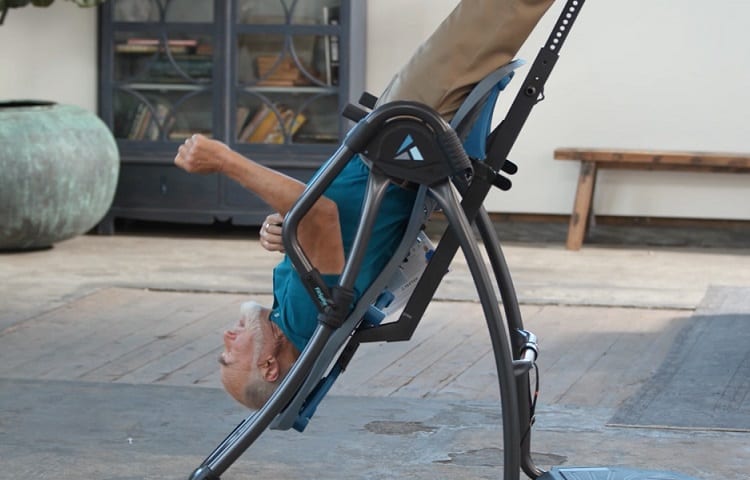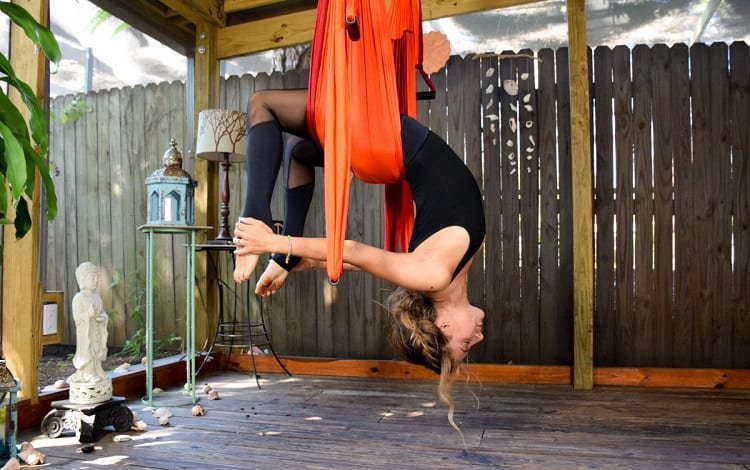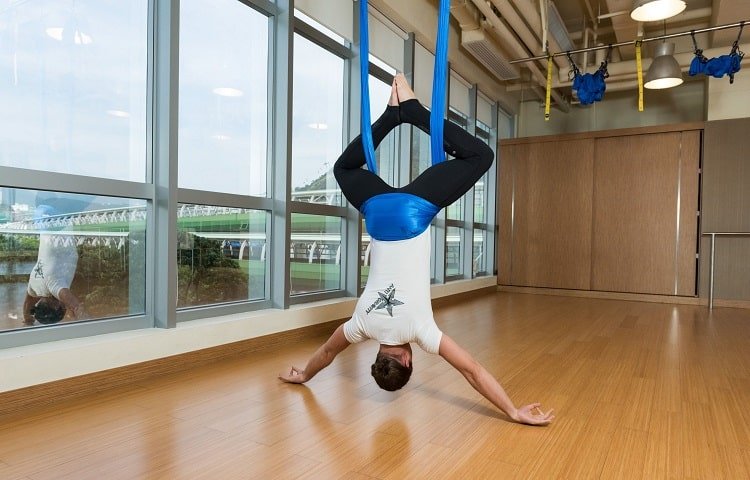 Inversion therapy is great.
Inversion therapy is great.
It can do wonders for a number of ailments. But it’s not right for everyone.
It is always best to consult your doctor.
This is also a good time to point out that I am not a chiropractor or physician.
While we research our articles and do our best to provide solutions, nothing we say on this site constitutes medical advice. Consult a professional!
With that out of the way, back to inversion therapy.
For most, the biggest drawback is the need for an inversion table.
Luckily, there are some alternatives, if you do not have one and do not want to buy one.
Keep reading for some great ways you can hang upside down, even if you do not have access to an inversion table.
Table of Contents
How To Hang Upside Down Without Inversion Table
Inversion tables rest at the foundation of inversion therapy. They help by stretching your spine and releasing built-up gasses between your spinal bones.

This releases tension and pressure that can constantly hurt you throughout the day.
Gravity takes its toll on your body, but especially your spine. Using an inversion table helps to decompress your spine.
But it also comes with some risks, like the possibility of ankle and knee damage. Moreover, they do cost money and take up space, too.
That’s why it’s nice to have alternatives.
If an inversion table isn’t for you, that’s okay. You have other ways that you can hang upside down to reap the benefits we just talked about. These are the simplest ones, with a low cost-to-entry.
Use A Yoga Ball

Is this completely upside-down? No, but you can get crafty with it.
If you lean back on a yoga ball and apply the pressure to the bottom of your back, you’ll be able to tilt your torso down in a 45° angle and slightly decompress your spine.
Your head will touch your yoga mat or the floor, and you’ll feel that tension in your back (it might even crack). This is not the best alternative to an inversion table, but it does help.
Yoga Trapeze Set

Some yoga moves can be complicated, requiring specialized equipment. Like a trapeze set.
These sets are mounted somewhere in your home. They give you four pegs to hold on to: two for your hands and two for your feet.
You pull on them or apply pressure with your feet and make the straps respond. Two straps are typically underneath your arms to help with stability and support.
With the right positioning, you can hang upside-down with the straps holding you up.
The only way that this is different from hanging upside-down in an inversion table is that you have to apply some level of tension to your joints to remain upside-down. With a good inversion table, there are straps and ankle pads to keep you in place.
Headstand Cage
These simple stands have a neck pad for support, as well as a cushion on the bottom on which to rest your head.
They are usually made of EVA foam, which will contour to your head’s shape, without putting unnecessary tension on the top of your head.
You place your hands on the bars surrounding the cushioned areas (which makes for a cage-like feeling), and tilt your body up to stand on your head.
If you fall, your body falls stomach first. The cage doesn’t hurt you, since the front is completely open.
This gives you a safe way to abandon the headstand. A headstand cage can be great for fit people, but may pose difficulties for overweight patients.
Benefits Of Hanging Upside Down

If you’re not sure whether hanging upside-down is right for you at all, here are the most helpful benefits that you can reap from doing this.
Back Pain Reduction
This is the whole point in hanging upside-down for a lot of people. Athletes, patients recovering from surgery, and just about everyone who endures chronic back pain can find some level of relief through inversion therapy.
You reduce back pain almost instantly. And when you stay upside-down for long enough, you continue to feel those effects when you stand back up.
Consistently hanging upside-down as part of your training or self-care regimen can provide long-term pain reduction. It’s not just about the immediate relief of cracking your back on an inversion table.
Improved Brain Function
All that extra blood (which carries oxygen) is gravity-fed to the most oxygen-sucking organ in your body: the brain. You’ll feel a bit lightheaded or dizzy at first, but plenty of patients and casual inversion table users report that they feel more focused, awake, and alert for hours on end after hanging upside-down.
Improved Balance
Our balance heavily relies on fluid within our ears. It’s constantly sitting in a specific state as gravity keeps our feet on the ground. Mixing this up trains your body to maintain a feeling of balance even when you’re upside-down, helping you maintain balance in less-than-perfect situations in your everyday life.
Joint Decompression
All of your body weight also weighs down on your joints, and that wears them down pretty quickly. By hanging upside-down, you’re stretching your knees and ankles, which offers short-term decompression.
This is just for pain management and doesn’t pose a long-term benefit, but it’s a nice feeling while you’re hanging upside-down.
Hang Upside Down Without Inversion Table: Final Thoughts
The above alternatives to inversion tables can all help help, but we want to emphasize that they’re not exact replicas of what inversion therapy can do for you.
In the end, you’ll want to weigh the advantages and disadvantages of inversion tables in order to decide whether they are right for you and your situation. In some cases, one of the alternatives above may be better for you.
In other cases, it may simply be a case of one of these alternatives being available. In that case, you should probably go ahead and buy an inversion table, but keep using one of these methods detailed here until you are able to get one.
Spondylolysis and degenerative 3rd stage with nencroachment in spine disc. I need some restorative exercises and manipulations. Can you advise.